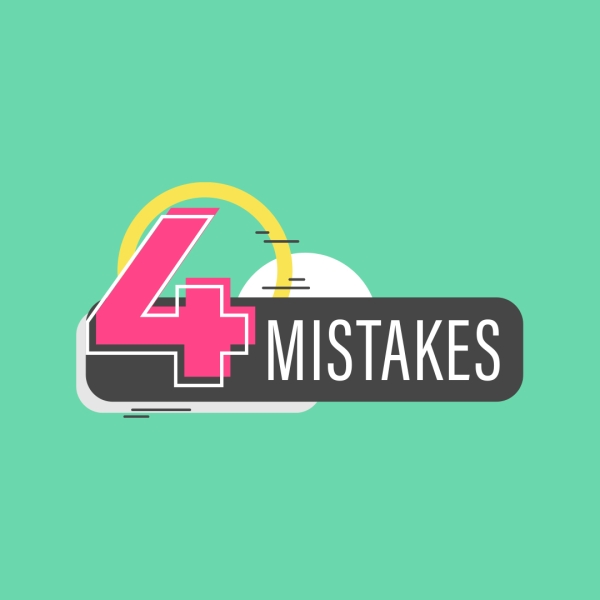Once upon a time, publishing a book meant swimming through a sea of rejection letters from traditional publishers, waiting months—or even years—for someone to give your manuscript a second glance. It was like trying to get into an exclusive club where the bouncers were armed with red pens. But thanks to technology, those days are behind us. Self-publishing has leveled the playing field, turning anyone with a story and a Wi-Fi connection into a potential bestseller.
In this brave new world, you don’t need a fancy literary agent or a publishing house’s blessing. Now, with just a few clicks and the right tools, you can take control of your own publishing journey, reach a global audience, and—wait for it—keep all your royalties! Self-published books empower authors by allowing them to bypass traditional gatekeepers, offering creative freedom and higher earning potential. Technology hasn’t just opened doors in the publishing world; it’s bulldozed them down, and self-publishing is the shiny, fast track to getting your book out there without losing your sanity.
Let’s dive into how technology is fueling this self-publishing revolution and why it’s the best time in history to be a writer.
Technology in Self-Publishing: The Evolution of the Publishing Industry
The publishing industry has come a long way from the days of quills, ink, and hefty printing presses. For centuries, traditional publishers held the reins, controlling who got published and who didn’t—like the gatekeepers of a literary kingdom. If your manuscript didn’t meet their strict criteria, well, better luck next time (or never). For aspiring authors, breaking into the industry often felt like trying to crack a secret code.
Your Publishing Journey Awaits – Start NowThen came the digital revolution. Suddenly, the industry began shifting from physical books to e-books and online platforms. Traditional publishing houses still had a hold on things, but the rise of the internet cracked open the gates. The real game-changer? Self-publishing. Self-published books have significantly contributed to this shift, offering new opportunities for authors. This new wave allowed authors to bypass the old system and go directly to their readers. No more waiting for approval from a panel of editors; authors could now take the reins and publish their work on their own terms. Self-published books empower authors by providing creative freedom and higher earning potential, and they have introduced interactive elements that open new avenues for storytelling.
Technology didn’t just nudge the industry forward—it gave it a full-on makeover. The result? A world where any writer can turn their manuscript into a book, reaching audiences across the globe, all while sipping coffee at home. The evolution of publishing has gone from an exclusive affair to a world of endless possibilities.
From Traditional to Digital
The shift from traditional to digital publishing has revolutionized the way books are created, distributed, and consumed. With the advent of technology, self-publishing has become a viable option for authors, allowing them to bypass traditional publishing houses and reach a global audience directly. Digital publishing has made it possible for authors to self-publish their work in just a few clicks, without the need for traditional publishing houses. This has democratized the publishing industry, giving more control to authors and allowing them to take charge of the publishing process.
The Rise of Self-Publishing
Self-publishing has become a popular option for authors, with many choosing to self-publish their work rather than traditional publishing. Self-publishing platforms like Amazon Kindle Direct Publishing (KDP) and Smashwords have made it easy for authors to upload, distribute, and sell their e-books. Self-publishing allows authors to retain creative control, keep a larger share of royalties, and reach a global audience. With self-publishing, authors can also publish their work quickly, without the need for traditional publishing houses.
Democratization of Publishing
The rise of self-publishing has democratized the publishing industry, giving more control to authors and allowing them to take charge of the publishing process. Self-publishing has opened up new opportunities for diverse voices and perspectives, allowing authors to publish their work without the need for traditional publishing houses. Self-publishing platforms have made it easy for authors to publish their work, without the need for traditional publishing houses. This has given more control to authors, allowing them to take charge of the publishing process and reach a global audience.
How Technology is Transforming the Self-Publishing Process
Gone are the days when self-publishing was synonymous with amateurism and endless headaches. Thanks to technology, the self-publishing process has evolved into a streamlined, efficient, and—dare we say—almost enjoyable experience. With tools and platforms like Amazon’s Kindle Direct Publishing (KDP), authors can now take their manuscript from draft to published book with just a few clicks.
The first major innovation is the ease of manuscript submission. Platforms like KDP, Lulu, and others allow authors to upload their manuscripts, format them for both eBooks and print-on-demand, and hit “publish” faster than you can say “query letter.” No more waiting in the slush pile; self-publishing platforms ensure that your book is available to a global audience almost instantly. And with print-on-demand services, you can print copies as orders come in—saving authors from the cost and hassle of traditional bulk printing.
E-readers and digital publishing have also played a massive role in this transformation. Readers are no longer limited to physical bookstores; they can download books instantly from anywhere in the world. This has opened up the market for self-published authors in unprecedented ways. With digital formats, anyone can publish a book that’s accessible on any device, from e-readers to smartphones, with just a few taps.
The entire publishing process, once a daunting labyrinth of red tape and gatekeepers, has been transformed into a smooth, user-friendly experience. From manuscript submission to global distribution, technology has empowered self-published authors to not only publish faster but also retain control over their work. It’s a revolution that’s not just fueling growth in self-publishing but is redefining the literary world. The rise of interactive elements in self-published books is also opening new avenues for storytelling.
Spines: Redefining the Self-Publishing Platforms Experience
Spines, founded in 2020 (formerly known as BooxAI), is changing the way self-publishing works by blending advanced AI with human expertise. The goal is simple: to make the publishing process smoother, faster, and more accessible for authors, regardless of their background or experience.
One of the things that sets Spines apart is its focus on speed. While the traditional publishing route can take months or even years, Spines aims to cut that time down to under 30 days. For authors looking to get their work out quickly, this can be a game-changer. Then there’s the cost factor. Publishing is often expensive, which is why many aspiring authors hesitate to dive in. Spines, with its AI-driven tools, offers services at a more affordable rate, making it easier to get professional help without breaking the bank.
Spines also offers a simple, easy-to-use platform that takes the guesswork out of the publishing process. Authors can upload their manuscript, design a cover, format the book, and manage distribution all from one intuitive dashboard, even if they don’t have any technical skills. Everything is laid out clearly, so you can focus on writing while the platform handles the rest.
Another key feature is the personal production manager assigned to each author, helping them navigate everything from proofreading and formatting to cover design. Spines’ AI tools handle a lot of the technical work, ensuring that the finished product looks and reads just right, whether it’s an eBook, audiobook, or print edition.
Global distribution is also part of the package. Your book isn’t limited to a single platform—it can be available on major outlets like Amazon and Barnes & Noble, making it easy for readers around the world to find. And for those unsure about the process, there’s even a 7-day money-back guarantee to give some peace of mind.
Overall, Spines is designed to simplify the self-publishing journey, offering support where it’s needed and making the entire process much more approachable. Whether it’s your first book or your tenth, Spines provides the tools and guidance to help you get your work out into the world.
Print-on-Demand: Revolutionizing the Publishing Model
One of the most significant shifts in the self-publishing world has been the rise of print-on-demand services. Gone are the days when authors had to invest in large print runs and store boxes of unsold books in their garage, hoping for a best-seller. Print-on-demand (POD) has turned this model on its head, allowing authors to print copies only when they are ordered, minimizing risk and waste.
Your Publishing Journey Awaits – Start NowFor self-published authors, POD is a game-changer. Not only does it cut down on upfront costs, but it also means you don’t have to worry about managing inventory. Platforms like Amazon’s KDP and IngramSpark make it possible to have your book printed and shipped with just a few clicks, no matter where in the world your readers are located. Whether someone orders one copy or one hundred, POD ensures that every book is printed on demand and delivered straight to the customer.
The environmental benefits of POD shouldn’t be overlooked either. By printing only what’s needed, authors and publishers can significantly reduce the waste that comes with unsold books. This shift not only makes self-publishing more accessible but also more sustainable.
For authors who want to offer both digital and physical copies of their book, POD is a flexible, efficient, and cost-effective solution. It’s a revolution in the publishing model that gives self-publishers more control over their work, while freeing them from the financial burdens of traditional printing.
Leveraging Technology for Editing and Book Design
In the world of self-publishing, first impressions matter—especially when it comes to your book’s content and design. But for many authors, hiring professional editors and designers can be both time-consuming and expensive. This is where technology steps in, offering tools that make editing and design more accessible and affordable without sacrificing quality.
One of the biggest advancements is in AI-powered editing. Platforms like Grammarly and ProWritingAid have made it easier for self-published authors to catch grammar mistakes, refine sentence structure, and polish their manuscripts before they ever reach a human editor. These tools provide instant feedback, allowing authors to improve their writing in real-time. While they may not fully replace professional editors, they offer a solid first layer of editing, saving authors time and money.
On the design side, AI-driven book cover creation has been a game-changer. For many authors, designing a professional-looking cover was once a daunting and expensive task. Now, AI tools can analyze the genre of your book, provide multiple design options, and generate a cover that’s tailored to your story. This not only speeds up the process but also ensures that your book has a visually appealing cover that stands out in a crowded market.
Self-publishing platforms like Spines offer a seamless combination of these AI tools and human expertise. Authors can start with AI-based suggestions for editing and design and then choose to bring in professional editors or designers for a final polish if they wish. It’s a flexible approach that gives authors control over their book’s quality without the traditional barriers of time and cost.
Your Publishing Journey Awaits – Start NowBy leveraging technology for editing and design, self-published authors can produce professional-quality books that compete with traditionally published titles—without needing to be design or grammar experts themselves. It’s another example of how technology is making the entire publishing process more accessible and empowering for authors at every stage.
Global Reach and Distribution
Self-publishing has made it possible for authors to reach a global audience, without the need for traditional publishing houses. Digital publishing has made it easy for authors to distribute their work globally, without the need for physical bookstores. Self-publishing platforms like Amazon KDP and Smashwords have made it easy for authors to upload, distribute, and sell their Ebooks globally. With self-publishing, authors can also use print on demand services to print and distribute physical copies of their books globally.
Access to a Worldwide Audience
Self-publishing has given authors access to a worldwide audience, without the need for traditional publishing houses. Digital publishing has made it easy for authors to reach readers globally, without the need for physical bookstores. Self-publishing platforms like Amazon KDP and Smashwords have made it easy for authors to upload, distribute, and sell their e-books globally. With self-publishing, authors can also use social media and online marketing to reach a global audience and promote their work.
Marketing in the Digital Age
Writing a book is one thing, but getting it into the hands of readers is another challenge altogether. Fortunately, technology has made marketing more accessible for self-published authors, leveling the playing field with traditional publishers. In today’s digital age, social media is one of the most powerful tools at your disposal. Platforms like Instagram, Twitter, and Facebook allow authors to connect directly with their target audience, build a following, and promote their books—often at little to no cost.
In addition to social media, online communities like Goodreads and Reddit provide spaces where authors can engage with readers, participate in discussions, and gain visibility. These platforms offer a more organic way to promote your book by fostering genuine connections and creating buzz around your work.
Another key advantage is the availability of data-driven insights. Digital marketing tools, like Google Analytics and social media insights, help authors track how readers engage with their content. This information allows for more strategic marketing decisions, such as where to focus advertising efforts or which platforms are driving the most sales.
Finally, don’t forget the power of email marketing. Building a mailing list and sending targeted campaigns to potential readers is a highly effective way to keep them informed about your book’s release, promotions, or upcoming events.
In short, technology has made marketing less intimidating and more manageable, giving self-published authors a wide range of tools to reach readers and build their audience.
The Future of Self-Publishing: Innovation and New Opportunities
Looking ahead, the future of self-publishing is brimming with exciting possibilities. Emerging technologies like virtual reality (VR) are already being explored for immersive reading experiences. Imagine giving readers the ability to “step into” your story, offering a whole new level of engagement beyond the written word. This kind of innovation could redefine how stories are told and consumed, giving self-published authors even more tools to captivate their audience.
At the same time, AI and automation continue to evolve, making every step of the publishing process faster and more efficient. Whether it’s enhancing reader interaction, improving book marketing, or generating data-driven insights, these advancements will help authors reach new heights in their careers.
The rise of diverse voices in self-publishing is another trend worth celebrating. With fewer gatekeepers, more authors from different backgrounds are able to share their stories with a global audience, reshaping the literary landscape.
As technology keeps advancing, self-publishing will only become more dynamic and accessible, opening up even more opportunities for authors to innovate, connect with readers, and leave their mark on the literary world.
Ready to bring your story to life? With Spines, you’re in the driver’s seat! Our platform blends powerful AI with hands-on support, making it faster and easier than ever to publish your book, keep your royalties, and reach a global audience. Join the self-publishing revolution—start your journey with Spines today!
Your Publishing Journey Awaits – Start Now






